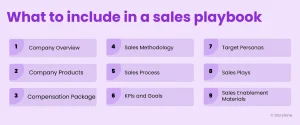
Ever wonder why some sales scripts just… work? It’s not magic—it’s behavioral economics. The way people make decisions isn’t always logical. Sometimes, it’s downright irrational. And if you can tap into those quirks? Well, that’s where the real sales magic happens.
The Psychology Behind the Pitch
Behavioral economics studies how emotions, biases, and mental shortcuts influence decisions. Think of it like a hidden playbook for human behavior. And sales scripts? They’re the perfect place to apply these principles. Here’s why:
- People hate losing more than they love winning (loss aversion).
- First impressions stick (anchoring).
- Scarcity makes things feel more valuable (FOMO).
Let’s break down how to use these insights to craft scripts that convert.
1. Leverage Loss Aversion
Humans are wired to avoid loss—sometimes irrationally. A study by Kahneman and Tversky found that losses feel twice as painful as gains feel good. So, instead of just highlighting benefits, frame your pitch around what the prospect stands to lose by not acting.
Weak script: “Our software saves you time.”
Optimized script: “Without our software, your team wastes 10 hours a week on manual tasks—that’s $15,000 in lost productivity annually.”
2. Anchor the Conversation
Anchoring is when people rely too heavily on the first piece of information they hear. In sales, that means setting the tone early. Start with a high-value reference point—like a premium price or a standout feature—before introducing alternatives.
Example: “Most companies invest $50K+ in solutions like this. Our plan starts at $25K, making it a cost-effective alternative.”
3. Create Scarcity (Without Being Sleazy)
Scarcity triggers urgency. But here’s the thing—it has to feel genuine. Fake deadlines or artificial stock limits backfire. Instead, highlight real limitations, like:
- “We only onboard 5 new clients per month to ensure personalized service.”
- “This discount expires Friday because our team capacity is almost full.”
4. The Power of Social Proof
People follow the crowd. It’s that simple. Sprinkle in specific social proof—not just vague “trusted by thousands” claims. Try:
- “92% of our clients renew their contracts after the first year.”
- “[Industry leader] switched to us last quarter and saw a 30% faster onboarding process.”
Pro Tip: Use the “But You Are Free” Technique
This sneaky-effective phrase reduces resistance by emphasizing the prospect’s autonomy. For example:
“We’d love to help you streamline operations—but of course, you’re free to explore other options.”
Studies show this can double compliance rates. Why? Because nobody likes feeling pressured.
5. Simplify Choices (But Not Too Much)
Too many options paralyze decision-making. Too few feel restrictive. The sweet spot? Three options—a “good, better, best” structure. Example:
| Basic | Core features | $99/month |
| Pro | Best for growing teams | $199/month |
| Enterprise | Custom solutions | Contact us |
Notice how the middle option feels like the safest compromise? That’s no accident.
Putting It All Together
Behavioral economics isn’t about manipulation—it’s about aligning your message with how people actually think. Test these tweaks in your scripts:
- Reframe benefits as avoided losses.
- Anchor with high-value comparisons.
- Use genuine scarcity.
- Add concrete social proof.
- Offer structured choices.
The best part? These principles work whether you’re selling SaaS, consulting, or even a $5 ebook. Because human psychology? That’s universal.








